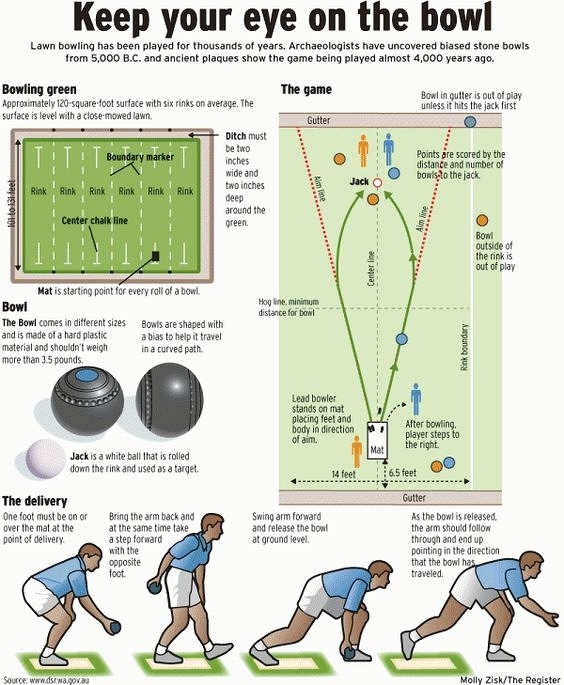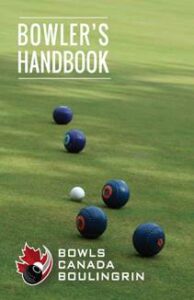
Bowler's Handbook

This game, in various forms, has stood the test of time, seamlessly blending elements of strategy, skill, social engagement, physical activity, affordability, competition, and pure enjoyment. While its fundamentals are easy to grasp, achieving mastery in this game—a pursuit that may span a lifetime—is a challenge that remains open-ended.
Bowls unfolds on a level grass surface referred to as a green, where a specific rink is marked out, distinguished by numbers at each end, ditches, and white stakes along the banks for boundary demarcation.
The equipment utilized includes “Bowls,” sizable biased balls with an elliptical shape, and a smaller white ball known as the “Jack.” The bowls’ bias, caused by their shape, introduces a turning effect as they traverse the green, gradually losing speed. Skill in the game lies in gauging the necessary weight to reach the target (the Jack) and determining the optimal line to guide the bowl towards the Jack more effectively than any other.
The game accommodates various formats: Singles, Pairs, Triples, or Rinks (Fours). Each team’s bowls constitute matched sets, featuring distinct markings for identification amid the competition.
Games are typically played over a predetermined number of ends, with Singles often reaching 21 points. Teams decide the order of play through a toss, determining the right to start or have the final bowl in the first end. After each end, the winning team must roll the Jack and the initial bowl for the subsequent end.
The person rolling the Jack also has the responsibility of setting the mat, centrally located on the rink, at least two meters from the near ditch and not exceeding the nearest “hog” line. Legal deliveries necessitate having one foot on or above the mat at the point of release.
The Jack, rolled first, moves in a straight line without bias. Players have the flexibility to roll the Jack at varying distances between the “hog” line and the ditch, influencing the overall length of the end based on team preference or exploiting opponents’ perceived weaknesses. Once the Jack is centered, the bowls are delivered in alternating turns, starting with the leads, followed by the seconds, thirds, and skips.
After all bowls are delivered, the end concludes, and points (“shots”) are awarded to the team with bowls closest to the Jack. Factors like the Jack being bumped off the green or into the ditch contribute to the dynamics of the game, requiring strategic considerations and defensive shots to navigate changing scenarios. Attention to the opponents’ bowls throughout an end becomes crucial, given the potential for the Jack to be moved, altering the shot standings and necessitating adaptability in gameplay.
